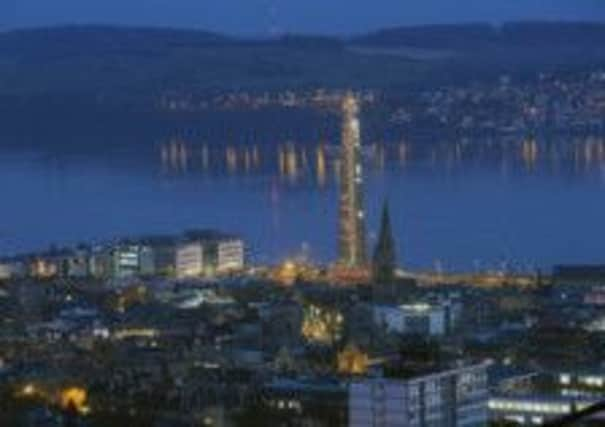Commemorating Dundee’s contribution in Great War Project


The recent anniversary of the murder of the Austrian Archduke Franz Ferdinand and his wife Sophie by Bosnian-Serb radical Gavrilo Princip is an excellent example of how events associated with the Great War can split contemporary opinion. To many, Princip’s actions in Sarajevo on 28 June, 1914, were that of a terrorist, the catalyst for a global conflict of inconceivable proportions – but a number of Bosnian Serbs choose to remember him as a national hero.
In Britain, the rapidly approaching centenary of the outbreak of the First World War has mostly escaped the posturing and political rhetoric that have shaped debate in the Balkans. Rather, the emphasis has been on which dates or happenings should be part of the official commemoration, and how best the war can be marked in a sensitive and appropriate fashion.
Advertisement
Hide AdAdvertisement
Hide AdIn academic circles, the anniversary has drawn attention to the excellent work that has enhanced our understanding of the conflict, although there is still a need to counter the many misconceptions of the “lions led by donkeys” approach, popularised by writer Alan Clark, Joan Littlewood, developer of Oh! What A Lovely War, and Blackadder Goes Forth that remain rooted in the nation’s collective memory. A consensus does exist around the enormous impact of the war in shaping the world we live in today, but also, on a more personal level, touching almost every one of our families.
The enduring popularity of genealogy and a passion for local history has helped fuel an interest in 1914-18 and contributed to the founding of a number of organisations and research projects whose remit is a micro study of the Great War in a specific town, village, school, district, or similar.
The Great War Dundee Commemorative Project, an Imperial War Museum First World War Centenary partner, was established in December 2011 to co-ordinate a city-wide approach to the centenary commemoration of the war, bringing together the local community and encouraging public participation.
The project’s partner groups include the University of Dundee, the McManus Art Gallery & Museum, DC Thomson, Leisure & Culture Dundee, the Black Watch Castle & Museum, and other local archives, history and heritage groups. The extent of this collective was instrumental in securing a Heritage Lottery Fund grant.
The war exacted a heavy toll on Dundee: by the Armistice, some 63 per cent of eligible men had seen action and more than 4,000 had made the ultimate sacrifice, contributing to one of the highest casualty rates in Scotland. In many ways, Dundee was a microcosm of what was happening across the country, but also something of a paradox. Despite contributing so much to the war effort, Dundee was also a centre for the anti-war movement in Scotland, aspects of which the GWD project has uncovered.
These new and unfamiliar aspects of Dundee’s wartime experience will help engage the local community. Dundonians well know the story of the 4th Black Watch, “Dundee’s Own”, the city’s territorial battalion.
Representing all ranks of Dundee society, the battalion marched to war in February 1915 almost 900-strong. On the morning of Saturday, 25 September 1915, some 20 officers and 420 men of the battalion took part in the great advance at Loos.
Fifty-seven per cent of those who went over the top that day would be killed or wounded in a battle that has become synonymous with Dundee’s war, and the beacon atop the Law war memorial is lit each year to commemorate a date that has a particular resonance.
Advertisement
Hide AdAdvertisement
Hide AdIn contrast, little is known about the sacrifice of Todburn Lane, a narrow avenue described as a “byway of a handful of houses”, which had six names added to its roll of honour by the end of 1914 – the vast majority of its menfolk.
Likewise, the contribution of Dundee’s Italian community has been mostly forgotten. In June 1915, a large and enthusiastic crowd accompanied Italian reservists to the Tay Bridge Station, the first stop en route to the high-altitude Gebirgskrieg (“mountain war”) between Italy and the Austro-Hungarian army.
Closer to home, the women and children of Dundee were supporting the war effort by raising tens of thousands of pounds for charitable causes that ranged from basic comforts for Indian soldiers to motor ambulances to the Serbian relief fund and Belgian refugees. These areas form part of the project’s school outreach activities with primary and secondary pupils in Angus, Fife and Perthshire.
Those interested in Great War Dundee will have an opportunity to learn more about the commemorative project early next month. In partnership with the BBC’s World War One At Home initiative, Great War Dundee will stage a roadshow event in City Square on 1-2 August, that will involve all the project’s partner groups, and engage with a range of local themes.
The First World War cast a long shadow and the interest in its 100th anniversary reflects its continued relevance. It is encouraging that Great War Dundee is only one of a number of similar groups working on specific local research and outreach projects, contributing to a more nuanced understanding of the events of 1914-18.
• Dr Derek Patrick is a lecturer in history at the University of Dundee and founder of the Great War Dundee Commemorative project. www.dundee.ac.uk